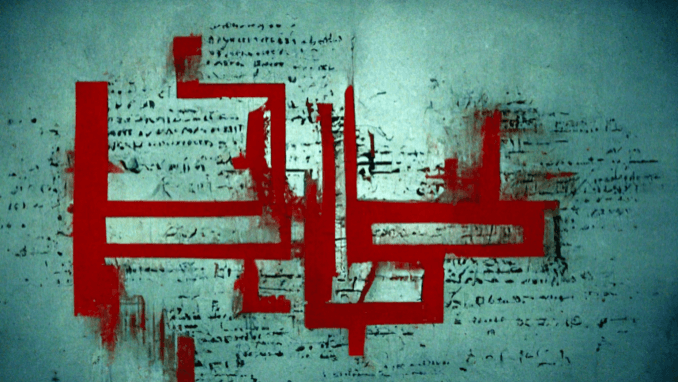
Traditionally, over centuries of formal education systems, and workplace learning, the learner has come under the tutelage of a ‘master’ of some kind, either as a pupil or as an apprentice, or similar. This master was seen as having all the answers, and even before learning became a knowledge domain in its own right, and was defined as a change in knowledge, skills or attitudes, the master would have been responsible for schooling a pupil in all of these.
Such learning is necessarily very loaded with content. If a master is to be able to pass down all they know and are able to do, and to ensure that pupils become upstanding citizens with no undesirable ideas or behaviours, then there need to be artefacts for them to teach from. This would certainly have been imparted verbally (lectures), or in writing, if the pupil could read; from examples of work, which should be copied to learn skills; and through commandments, and rewards and punishments.

What is content free learning?
Increasingly however, there has been a shift towards learning models and pedagogies which shift the focus away from the ‘Sage on the Stage’ and onto the role of the learner. Terms such as ‘learner-centred’ and ‘facilitative learning’, have come to the fore, and techniques such as problem-based learning, social learning and, of course, games-based learning are now widely used.
If we imagine that all learning experiences are on a continuum. At one end are highly passive experiences, where the educator is responsible for ‘filling up’ the empty vessel that is the learner. The learning has little or no agency, and there is little requirement for them to exercise creativity in what or how they learn. They need to simply apply themselves to absorbing and emulating the learning content that are presented with.
Most learning experiences today, fall somewhere in the middle, with a mix of instruction from a ‘Sage’ and a variety of activities where the learner is encouraged to exercise some creativity and autonomy, and to take a greater degree of responsibility towards their own learning. This is a more facilitative model, where the educator is there to guide but not ‘teach’, answer questions if they arise, and point them towards resources from which they can construct their own learning.
In the example above, while the learner is ‘set free’ to discover and construct learning, it is still likely that there will be content, related to the domain of learning, and potentially even more of that than if they had attended a lecture from a ‘sage’ – case studies, Internet scavenger hunts, simulation games, videos to watch etc. – all of which have originated, maybe not with the sage who is in the room with them, but with some sage somewhere.
At the other extreme of the continuum, there is what I like to think of as ‘content-free’ learning. The learner will be given access to resources or process, but these may be generic, and have no relationship to the knowledge, skill or attitude that the learner is accessing. In this case, the learning is entirely constructed from the interaction of the individual or group with the activities and reflection which these resources facilitate.
Content-free learning – pros and cons…
There is no assumption that any point on the continuum is ‘better’ or ‘worse’ than any other point, simply that educators and learners are able to access the appropriate level of learner creativity and autonomy for whatever learning needs to take place. It would be inappropriate, for example, for learners to ‘discover’ for themselves the proper safety procedures and checklists for parachute jumping, just as would be inappropriate for a facilitator to ‘instruct’ a learner about the learner’s own lived experience, in a session exploring mental health issues.
‘Content-free’ learning is therefore most suited to situations where the learners are the ‘experts’. Coaching is a good example of this. A coach does not tell a coachee what to do or think, but simply facilitates the drawing out of knowledge, wisdom (new insights constructed from existing knowledge) and ideas for action, from the coachee.
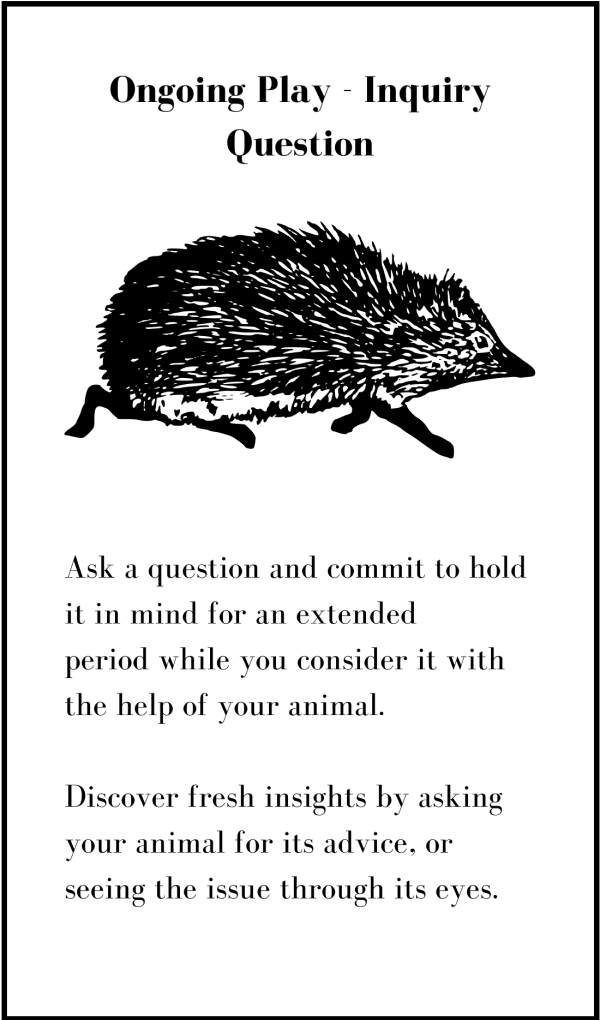
Another excellent use-case for content-free learning is facilitative group work, where it is assumed that the group contains wisdom (and collective skills) that is greater than the sum of the individual wisdom contained within it.
In both these cases, there is no need for an educator to bring any ‘content’ to the situation. So, what do they bring? What does content-free learning look like?
At the heart it is about process, so a skilled facilitator may be needed to set that process in motion and to ensure that it stays on track. Some content-free learning is nothing but process, while in other cases there may, in fact be content. This might seem contradictory, but usually this content will be unrelated to the intended learning. It is intended as stimulus, which will be used a lens through which the learner can approach the question in hand.
…And some examples
A well-known and archetypal example of content-free learning, that is all about process is Lego® Serious Play®. The bricks on the table have no meaning attached to them at all until the process of putting them together in response to a stimulus begins. The stimulus is a question, and all the meaning, the ‘content’, is entirely derived from the minds of the individual model builders, and later from the interactions of the rest of the group with their own and each other’s models. Layers of process, each building on the one before can be applied, if appropriate, to facilitate everything from simple individual insights, to the extrapolation of strategic guiding principles for large complex organisations.
The greater the reliance on pure process, the greater the need for skilled facilitation. Content-free tools which are richer in stimuli can often be used with or without a facilitator. Because these tools do not need to transfer large quantities of knowledge or demonstrate skills, they are often very compact and portable. Cards are a popular choice of format, and pretty much any ‘facilitation deck’ you can think of will fall into this category, with images and questions often being the go-to stimuli.
Two of my own decks demonstrate different approaches, and show that slight differences in process or stimulus can make for very different applications.
The Gift Horse is available either as a PDF or a card deck on Deckible. It was inspired by Brave Sparrow, The Kiss of Walt Whitman, Philip Pullman’s ‘His Dark Materials’, and Street Wisdom (mentioned below). It is quite introspective in nature, and is designed to bring about (either guided by a facilitator or individually) reflection on an individual’s questions. The player navigates the question(s) with the help of an animal, which has attached itself to them. It can be used a part of a finite game session or as a daily practice. For example, an individual faced with a dilemma might as themselves ‘What would my octopus do?’ or ‘What special abilities does my animal have to help me through this?’. This approach is designed to encourage divergent thinking by viewing questions through a different lens than one’s own everyday experience.
The Museum of Impossible Objects, on the other hand, is more outward looking. It consists of a set of cards, each of which shows an image and exhibit label for an item which is held in a strange museum. Many of the objects are supernatural, or in some way extraordinary. On the backs of the cards are open-ended questions about the exhibits, supposedly placed in the museum visitors’ minds by the museum itself, which has a strong psychic field.
The Museum of Impossible Objects is available on Deckible
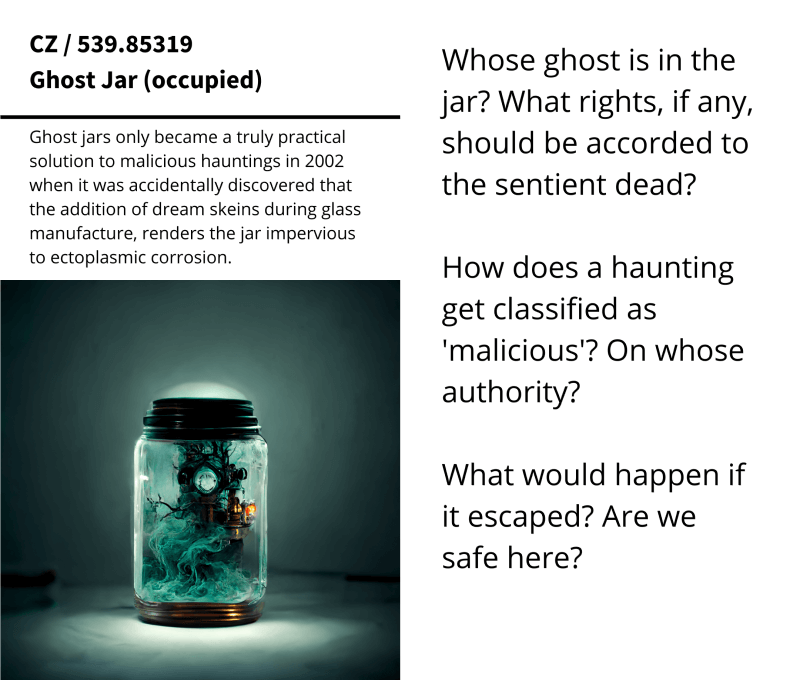
The Museum cards can be used simple writing prompts, (probably in the weird fiction genre) but can also be used to start discussion around fundamental questions of ethics, politics and so on, and could be used in Philosophy, Critical Thinking and Personal and Social Development classrooms, among others. Speculative fiction, such as fantasy or sci-fi has always done an excellent job of allowing us to ask ourselves these difficult questions, with that one step of ‘remove’ which makes the discourse ‘safer’. For example, the Ghost Jar exhibit is a device which is used to trap ghosts carrying out ‘malicious hauntings’. It is displayed, complete with an occupant, in the museum. The questions on the reverse of the card ask visitors to think about who it is that decides that a haunting is ‘malicious’, and what rights, if any, should be accorded to the ‘sentient dead’.
Although the cards point learners towards certain topics, they don’t contain any ‘content’ on those topics, as such. While the questions and stimulus might lead to very deep discussions on crime and punishment; who makes the rules; the treatment of ‘the other’, including refugees, people with disabilities, or even other species; and the ethics of displaying the remains of living beings; the cards don’t provide the content on these questions. All of that must be sourced elsewhere.
Street Wisdom, is another highly process-driven form of learning, where the stimulus is a personal question of concern, and the surroundings experienced on a mindful walk. First the walker goes through a series of simple exercises to tune into their surroundings. Then holding the question in mind, they walk with heightened awareness of what they can see, hear, smell and touch around them, until some particular element presents itself as a complete or partial answer.
This has quite a lot in common with the Gift Horse, or indeed other tools of intuition such as the Tarot. While a road-sign (Street Wisdom), the fact that an octopus has three hearts (Gift Horse), or the High Priestess card (Tarot), do have inherent attached meanings, it is not those meanings, but the individual interpretations of them, fuelled by intuition, or previous experience or feelings of coincidence, which bring the learning.
Can learning be truly ‘content-free’
I have recently been experimenting with the idea of removing as much meaning as possible from the tools (in this case, again, cards) I am making for content-free learning. The idea behind this is to create tools that give the greatest autonomy and potential for creativity to the learner, when constructing their own meaning, and from that, their own learning.

Clean Language is a facilitation technique designed to remove the facilitators ‘content’ input when posing questions. It does this by using a fixed structure of questions in which the only ‘content’ is the respondent’s words mirrored back to them. In this technique, metaphor is seen as important in creating meaning, so the clean language technique seeks to strip out any of the facilitator’s meanings and suggested metaphors, to enable the respondent to discover their own without contamination. To contrast the use of non-clean questioning, with clean questioning, a non-clean follow up question to a respondent’s statement of ‘I feel odd’, might be ‘Do you think you have Covid?’ or more metaphorically ‘Are you under the weather?’. A clean question might be ‘And where do you feel odd?’, or ‘And what kind of odd?’
Clean Language: Revealing Metaphors and Opening Minds is available on Amazon
Deliberately Meaningless
The primary purpose of most presented images and text is to convey meaning, so trying to use those to create stimulus, while conveying the bare minimum of meaning, calls for some level of obfuscation and manipulation. Asemic text uses different character sets, and may change the text orientation, from that usually used by the person writing the text. Asemic text is different from a code, however, as it deliberately has no meaning, and cannot be decoded or translated into something which has meaning.
Some artificial languages are ‘codes’, in that they have meanings and can therefore be translated. Klingon, for example, can be learned on Duolingo, and poems written in Tolkein’s Quenya can also be read and enjoyed in other languages. Other constructed languages, are, or may be, completely asemic, like the writing in the Codex Seraphinianus or the Voynich Manuscript. In the case of the latter, we simply don’t know if it is translatable or not, and it is this ambiguity which makes asemic text so good for content-free learning.
The Codex Seraphinianus is available on Amazon
The Voynich Manuscript is available on Amazon
The deck I currently have in development uses asemic text, and deliberately ‘strange’ images, to encourage learners to construct their own meanings when they interact with them. I also want to make the nature and purpose of the deck as a whole as ambiguous as possible. Is it a game, a method of divination, a set of index cards containing a knowledge base, a holy text – or something else entirely.
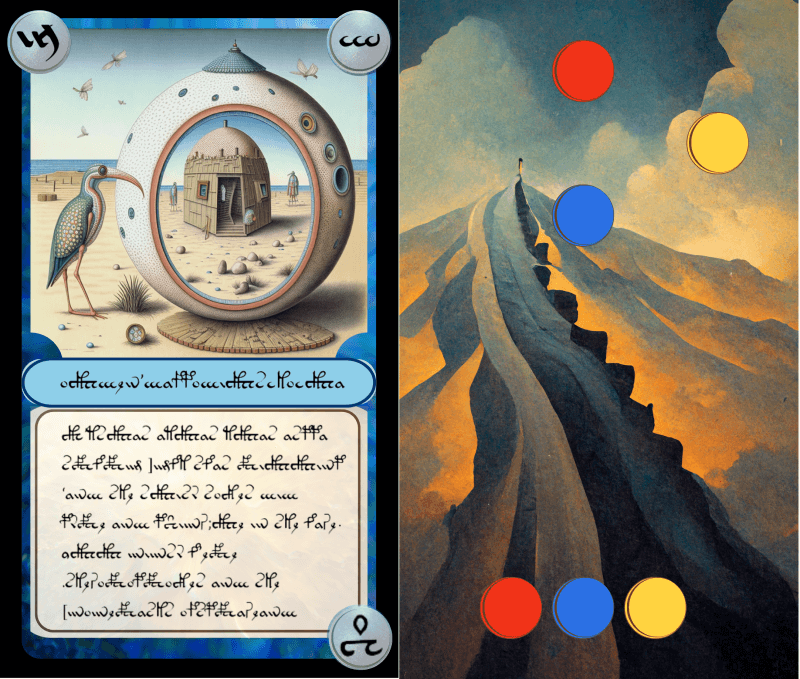
It is this aspect of design that has been most challenging, because we recognise and associate specific formats and layouts with specific purposes. A card taken from a game looks like a card taken from a game, but I am hopeful that I can achieve an acceptable level of ambiguity.
But why would something without meaning be useful in learning?
It is precisely because human always seek meaning, even and perhaps especially, when there is none, that such ‘asemic’ tools are useful. We are pattern detecting creatures, and particularly when those patterns are important to us. This is seen most markedly in the phenomenon of ‘face pareidolia’ – seeing faces, which are not really there, in everyday objects.

The human need to find meaning in the seemingly meaningless has given us religious beliefs, creation myths and the scientific method, among many other staggering instances of creative imagination.
When faced with something which is without meaning, a creative impulse is sparked, and that is the intention of these cards. With no more information or instruction than ‘What are these? How do they work? You have x hours. Go!’, you free a team of people to ideate and create, to find meaning, and innovate in ways that are important and relevant to their needs and goals, without the burden of externally imposed ‘content’.
- James Bore – The Ransomeware Game - 13th February 2024
- Ipsodeckso – Risky Business - 23rd January 2024
- Review – Luma World Games - 15th December 2023


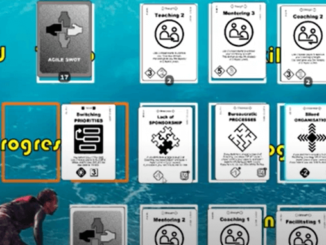


Be the first to comment